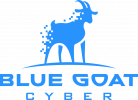
Welcome to Blue Goat Cyber, where the complex world of cyberspace becomes accessible! Today, we’re embarking on an enlightening journey through the different layers of the internet – the Clear, Deep, and Dark Webs. These layers, each with its unique characteristics and uses, form the vast and varied expanse of the internet as we know it.
The Visible World: The Clear Web
The Clear Web is like the bustling city center of the internet – it’s where most of us spend our digital lives. This layer comprises all the websites and data that search engines like Google, Bing, and Yahoo can find and index. It’s the part of the internet that’s completely open to the public and easily accessible through standard browsers.
Characteristics of the Clear Web:
- Search Engine Indexed: Easily searchable through conventional search engines.
- Mainstream Use: Includes popular websites like Wikipedia, news outlets, and social media platforms.
- High Visibility: It’s the most visible part of the internet, forming about 4-10% of the entire web.
Cybersecurity Implications:
While the Clear Web is the most familiar, it’s also where most cyber threats like phishing, malware, and social engineering attacks occur. Practicing safe browsing habits, using strong passwords, and keeping your software updated is essential.
The Deep Web: Uncharted Depths
The Deep Web is often likened to the vast portion of an iceberg that lies beneath the surface. It’s a colossal segment of the internet, invisible to standard search engines and the general public.
Key Characteristics of the Deep Web:
- Massive in Size: It’s estimated to be significantly larger than the Clear Web, containing a treasure trove of unindexed data.
- Privacy-Focused: Used for keeping personal and sensitive information away from public view.
Navigating the Deep Web:
- Virtual Private Networks (VPNs): A VPN is a primary tool for maintaining privacy. It hides your IP address and encrypts your internet traffic, providing a layer of anonymity and security.
- Specialized Search Engines: Regular search engines can’t index the Deep Web, but specialized search engines like DuckDuckGo offer a deeper search experience without tracking your activity.
- Secure Browsers: While not necessarily required for all Deep Web access, browsers focused on privacy, like Tor, can be beneficial.
Real-World Examples:
- Academic Databases: JSTOR or ScienceDirect host vast amounts of academic papers not available on the Clear Web.
- Private Forums and Communities: Specialized forums where entry is restricted to members, often for privacy or security reasons.
The Dark Web: The Internet’s Hidden Face
Now, let’s navigate the murky waters of the Dark Web. This is the most concealed and encrypted part of the internet, often associated with anonymity and, unfortunately, illicit activities.
Key Characteristics of the Dark Web:
- Anonymity: Thanks to encryption technologies, users and website operators are largely anonymous.
- Requires Specific Tools: Accessible only through special software like Tor, which allows users to browse anonymously.
Accessing the Dark Web:
- Tor Browser: The primary gateway to the Dark Web. Tor stands for “The Onion Router” and offers multiple layers of encryption, similar to the layers of an onion.
- Secure Operating Systems: Consider using security-focused operating systems like Tails, which can be booted from a USB drive and leave no trace on your machine.
- Cryptocurrencies: Many transactions on the Dark Web are done using cryptocurrencies for added anonymity.
Real-World Examples:
- Secure Communication Platforms: Journalists and activists in oppressive regions use them to communicate safely.
- Specialized Marketplaces: Unfortunately, this also includes illegal marketplaces, but there are also platforms for legitimate goods and services that are not easily accessible on the Clear Web.
Tips for Navigating These Layers Safely
- Stay Informed: Understand the distinct layers and their uses.
- Practice Safe Browsing: Use VPNs and strong anti-virus software, especially when exploring beyond the Clear Web.
- Guard Personal Information: Be vigilant about where and how you share your personal and financial information.
- Regular Updates: Keep your software and security protocols up to date.
Conclusion: Embracing the Vastness with Caution
With its Clear, Deep, and Dark layers, the internet is a vast and varied landscape. Each layer serves different purposes, from the everyday browsing of the Clear Web to the more obscure and hidden realms of the Dark Web. As cyber explorers, we must navigate these layers safely and responsibly.
Need help securing you business? Contact us.


